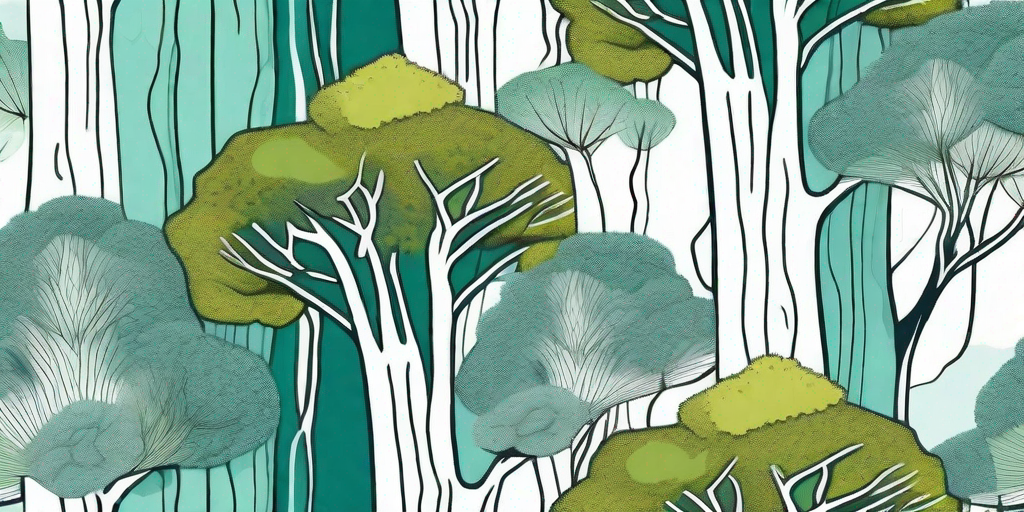
Welcome, dear reader, to the fascinating world of lichens. These little wonders of nature are more than just a splash of color on your neighborhood trees. They're a testament to the resilience of life, the beauty of symbiosis, and the artistry of Mother Nature herself. So, buckle up, and let's embark on a journey into the beautiful and mysterious world of lichens on trees.
The What and the How of Lichens
Before we dive into the depths of lichenology (yes, that's a real word), let's get our basics right. Lichens are not individual organisms. Instead, they are a complex life form that arises from the symbiotic relationship between a fungus and an alga or cyanobacterium. The fungus provides the structure and protection, while the alga or cyanobacterium brings the food to the table through photosynthesis. It's like the ultimate roommate situation, except they're sharing a single body.
Now, you might be wondering how these two completely different organisms manage to live together. Well, it's all about give and take. The fungus provides a cozy home for the alga or cyanobacterium, protecting it from harsh environmental conditions. In return, the alga or cyanobacterium uses sunlight to produce food for both of them. It's a win-win situation, really. And the result of this beautiful partnership? The stunning lichens you see on trees, rocks, and just about anywhere else.
The Different Types of Lichens
Just like humans, lichens come in all shapes, sizes, and colors. There are three main types of lichens: crustose (crusty), foliose (leafy), and fruticose (branchy). Crustose lichens are like the introverts of the lichen world. They grow close to the surface and are often hard to spot. Foliose lichens, on the other hand, are more outgoing. They're leafy and often brightly colored, making them easy to spot. Finally, fruticose lichens are the show-offs. They're shrubby and often hang down from trees like little chandeliers.
Each type of lichen has its own unique beauty and charm. So, the next time you're out for a walk, take a moment to appreciate the diversity of lichens around you. You might be surprised by what you find.
The Role of Lichens in Nature
Lichens are not just pretty to look at. They play a crucial role in our ecosystem. For starters, they're pioneers. They're among the first organisms to colonize bare rocks and soil, paving the way for other plants. They also help in soil formation by breaking down rocks into smaller particles. Talk about being a team player!
But that's not all. Lichens also provide food and shelter for a variety of animals. Some birds even use lichens to camouflage their nests. And let's not forget their role in nutrient cycling. By absorbing nutrients from the air and rain, lichens help enrich the soil when they die and decompose. So, the next time you see a lichen, remember, it's not just a pretty face. It's a hardworking member of our ecosystem.
Lichens and Air Quality
Did you know that lichens can tell us a lot about the air quality in an area? Lichens are sensitive to air pollution, especially sulfur dioxide. So, if you see a lot of lichens in an area, it's a good sign that the air quality is good. On the other hand, if there are few or no lichens, it might be time to start worrying about air pollution.
Scientists even use lichens as bioindicators to monitor air quality. So, lichens are not just beautiful, they're also useful. Who knew?
FAQs about Lichens
- Are lichens harmful to trees?
No, lichens are not harmful to trees. They're merely using the tree as a support and do not take nutrients from it. So, if you see lichens on a tree, there's no need to panic.
- Can lichens grow on any surface?
Yes, lichens can grow on almost any surface, as long as it's stable and gets enough light. This includes rocks, soil, tree bark, and even man-made structures like walls and roofs.
- Are lichens a sign of air pollution?
Yes and no. While lichens are sensitive to air pollution, their presence or absence can't tell us everything about air quality. Other factors, like light and moisture, also affect lichen growth. So, while lichens can give us some clues about air quality, they're not the whole story.
Conclusion
So, there you have it, folks. The beautiful and mysterious world of lichens on trees. These humble organisms are more than just a splash of color on our landscape. They're a testament to the power of cooperation, the resilience of life, and the beauty of nature. So, the next time you see a lichen, take a moment to appreciate its beauty and its role in our ecosystem. You'll be glad you did.
And remember, lichens are everywhere. So, keep your eyes open and your curiosity piqued. You never know what you might discover.















